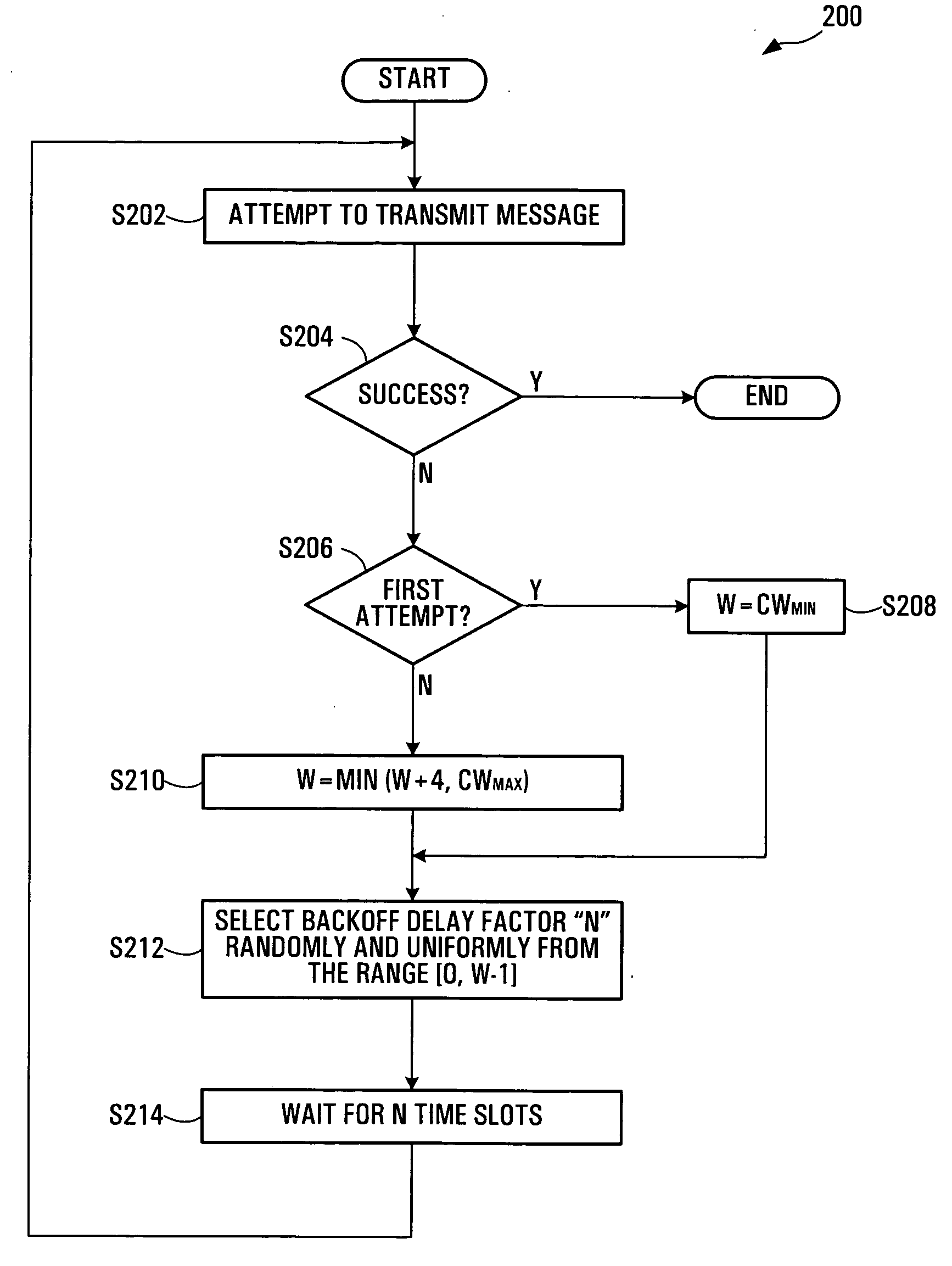Modified backoff mechanism for wireless networks
a backoff mechanism and wireless network technology, applied in the direction of wireless commuication services, network traffic/resource management, transmission, etc., can solve the problems of inability to detect collisions while transmitting, inconvenient use of collision detection schemes, and use of collision avoidance approaches instead of collision detection schemes
- Summary
- Abstract
- Description
- Claims
- Application Information
AI Technical Summary
Benefits of technology
Problems solved by technology
Method used
Image
Examples
Embodiment Construction
[0021]FIG. 1 illustrates a wireless local area network (LAN) 10 including a number of stations 12A, 12B and 12C (referred to generically and cumulatively as station(s) 12). The stations 12 may be portable computers, portable digital assistants, VLAN mobile (i.e. WLAN cordless) handsets or other computing devices which are capable of intercommunication over the common wireless medium provided by the LAN 10. The wireless LAN 10 in the present embodiment operates in accordance with a modified version the IEEE 802.11 protocol, as will be described.
[0022] Each station 12 in the wireless LAN 10 accesses the shared medium in accordance with a modified version of the Carrier Sense Multiple Access / Collision Avoidance (CSMA / CA) protocol. The modified CSMA / CA protocol is the same as the CSMA / CA protocol employed in the IEEE 802.11 standard, except that a different backoff delay mechanism is used. The CSMA / CA protocol may for example be executed by a LAN controller (not shown) in each station....
PUM
 Login to View More
Login to View More Abstract
Description
Claims
Application Information
 Login to View More
Login to View More - R&D
- Intellectual Property
- Life Sciences
- Materials
- Tech Scout
- Unparalleled Data Quality
- Higher Quality Content
- 60% Fewer Hallucinations
Browse by: Latest US Patents, China's latest patents, Technical Efficacy Thesaurus, Application Domain, Technology Topic, Popular Technical Reports.
© 2025 PatSnap. All rights reserved.Legal|Privacy policy|Modern Slavery Act Transparency Statement|Sitemap|About US| Contact US: help@patsnap.com



